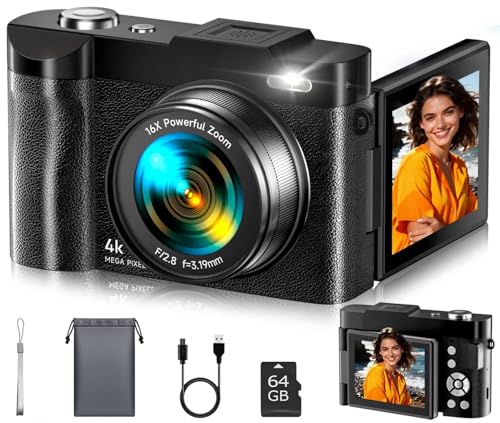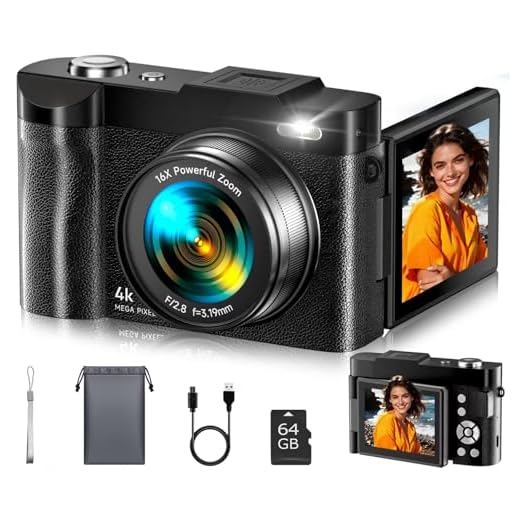




Mirrorless cameras have been gaining popularity in the photography world in recent years, challenging the traditional dominance of DSLRs. The debate over which type of camera is better has sparked intense discussions among photographers and enthusiasts alike.
With their compact size, lighter weight, and innovative technology, mirrorless cameras offer a compelling alternative to bulky DSLRs. The absence of a mirror mechanism allows for a more streamlined design and quieter operation, making mirrorless cameras ideal for street photography and travel.
However, DSLRs still have their place in the market, especially for professional photographers who require robust build quality, longer battery life, and a wider selection of lenses. The choice between mirrorless and DSLR ultimately comes down to personal preference and shooting style.
Are Mirrorless Cameras Better?
When it comes to choosing between a mirrorless camera and a traditional DSLR, many factors come into play.
Advantages of Mirrorless Cameras:
- Compact and lightweight
- Electronic viewfinder for real-time preview
- Fast and accurate autofocus
- Silent shooting mode
Disadvantages of Mirrorless Cameras:
- Shorter battery life
- Limited lens selection
- May lack some advanced features found in DSLRs
Ultimately, the decision between a mirrorless camera and a DSLR depends on your specific needs and preferences. Both types of cameras have their own strengths and weaknesses, so it’s important to consider what features are most important to you before making a choice.
Pros and Cons of Mirrorless Cameras
Mirrorless cameras have gained popularity in the photography world due to their compact size and advanced features. However, they also come with their own set of advantages and disadvantages.
Pros:
| 1. Size and Weight: | Mirrorless cameras are typically smaller and lighter than DSLRs, making them more portable and easier to carry around. |
| 2. Electronic Viewfinder: | Many mirrorless cameras feature an electronic viewfinder, providing a real-time preview of your image with exposure and white balance adjustments. |
| 3. Fast Autofocus: | Due to their advanced autofocus systems, mirrorless cameras can focus quickly and accurately, especially in continuous shooting mode. |
Cons:
| 1. Battery Life: | Mirrorless cameras tend to have shorter battery life compared to DSLRs, requiring more frequent recharging or carrying extra batteries. |
| 2. Limited Lens Options: | While the lens selection for mirrorless cameras is growing, it may not be as extensive as that of DSLRs, limiting your creative options. |
| 3. Heat Build-up: | Continuous shooting with a mirrorless camera can lead to heat build-up in the body, potentially affecting performance and longevity. |
Image Quality Comparison
One of the key factors to consider when comparing mirrorless and DSLR cameras is the image quality they produce. Both types of cameras can capture high-quality images, but there are some differences to be aware of.
Resolution
Many mirrorless cameras have high-resolution sensors that can rival those found in DSLRs. This means they can capture a lot of detail in their images, making them suitable for large prints or cropping without losing quality.
Noise Performance
Due to the design of mirrorless cameras, they tend to have better noise performance at higher ISO levels compared to DSLRs. This can be particularly beneficial in low-light situations where you need to use a higher ISO setting.
Overall, both mirrorless and DSLR cameras can produce excellent image quality, but the specific features of each camera type may make one more suitable for certain situations than the other.
Size and Weight Benefits
One of the key advantages of mirrorless cameras is their compact size and lightweight design. Without the bulky mirror mechanism found in DSLRs, mirrorless cameras are generally smaller and lighter, making them easier to carry around for extended periods of time.
This reduction in size and weight can be particularly beneficial for travelers, street photographers, and anyone who values portability and convenience. Mirrorless cameras are often more discreet and less obtrusive, allowing photographers to blend in with their surroundings and capture candid moments without drawing too much attention.
Autofocus Performance
One of the key advantages of mirrorless cameras is their autofocus performance. Mirrorless cameras generally have faster and more accurate autofocus systems compared to DSLRs. This is due to the fact that mirrorless cameras use on-sensor phase-detection autofocus technology, which allows for quicker and more precise focusing. Additionally, mirrorless cameras often have more autofocus points spread across a larger portion of the sensor, providing better coverage and tracking capabilities.
Some mirrorless cameras also feature advanced autofocus tracking algorithms and eye detection technology, which can enhance the accuracy and speed of focusing, especially when shooting moving subjects or portraits. Overall, mirrorless cameras tend to excel in autofocus performance, making them a preferred choice for many photographers, especially those shooting fast-paced action or wildlife photography.
Lens Selection and Compatibility
One of the key advantages of mirrorless cameras is their versatility when it comes to lens selection. Mirrorless cameras typically have a shorter flange distance, allowing for a wider range of lenses to be used with the right adapter.
When choosing lenses for a mirrorless camera, photographers have the flexibility to use lenses from various manufacturers, including third-party lens makers. This opens up a world of creative possibilities and allows photographers to experiment with different focal lengths, apertures, and lens characteristics.
Additionally, many mirrorless camera systems offer compatibility with older lenses through the use of adapters. This means photographers can use vintage lenses or legacy glass with their modern mirrorless cameras, adding a unique aesthetic to their images.
Overall, the lens selection and compatibility of mirrorless cameras provide photographers with a wide range of options to suit their shooting style and creative vision.
Battery Life Considerations
One important factor to consider when comparing mirrorless cameras to DSLRs is battery life. Mirrorless cameras typically have smaller bodies, which means they have less space for a large battery. As a result, mirrorless cameras often have shorter battery life compared to DSLRs. This can be a significant drawback, especially if you plan on shooting for long periods of time without access to a charging source.
However, advancements in battery technology have improved the battery life of mirrorless cameras in recent years. Some mirrorless cameras now offer decent battery life that can rival or even surpass some DSLRs. It’s important to check the specifications of the specific mirrorless camera you are interested in to see how its battery life compares to DSLRs.
Electronic Viewfinder vs Optical Viewfinder
When it comes to choosing between a mirrorless camera and a DSLR, one of the key differences lies in the viewfinder technology. Mirrorless cameras typically come with an electronic viewfinder (EVF), while DSLRs have an optical viewfinder (OVF).
Electronic Viewfinder (EVF)
An electronic viewfinder is essentially a mini display that shows you a digital preview of the scene you’re capturing. EVFs provide a real-time view of your image with exposure and white balance adjustments visible in the viewfinder. They also offer features like focus peaking and magnification for precise manual focusing. Additionally, EVFs can display key shooting information overlay on the screen, making it easier to review settings without taking your eye off the viewfinder.
Optical Viewfinder (OVF)
On the other hand, optical viewfinders use mirrors to reflect the scene directly into your eye. This means you’re looking at the actual scene through the lens rather than a digital representation. OVF offers a more natural and seamless viewing experience with no lag or pixelation. Some photographers prefer OVF for its clarity and real-world representation of the scene.
| Feature | Electronic Viewfinder (EVF) | Optical Viewfinder (OVF) |
|---|---|---|
| Real-time Preview | Yes | No |
| Display Information | Yes | No |
| Clarity | High resolution, but digital | True optical clarity |
Ultimately, the choice between an EVF and OVF comes down to personal preference and shooting style. Both technologies have their advantages and drawbacks, so it’s essential to test both types of viewfinders to see which one suits your needs best.
Price Point Comparison
When it comes to price, mirrorless cameras tend to be more expensive than DSLRs. This is mainly due to the technology and features packed into a smaller and lighter body. Mirrorless cameras often come with advanced autofocus systems, in-body image stabilization, and electronic viewfinders, which can drive up the cost.
On the other hand, DSLRs are typically more affordable, especially for entry-level models. They have been around for longer and use more traditional technology, which can help keep costs down. However, as mirrorless technology continues to improve and become more mainstream, the price difference between the two types of cameras is narrowing.
| Feature | Mirrorless Camera | DSLR |
|---|---|---|
| Size and Weight | Smaller and lighter | Bulky and heavier |
| Autofocus | Advanced autofocus systems | Traditional autofocus systems |
| Image Stabilization | In-body image stabilization | Lens-based image stabilization |
| Viewfinder | Electronic viewfinder | Optical viewfinder |







